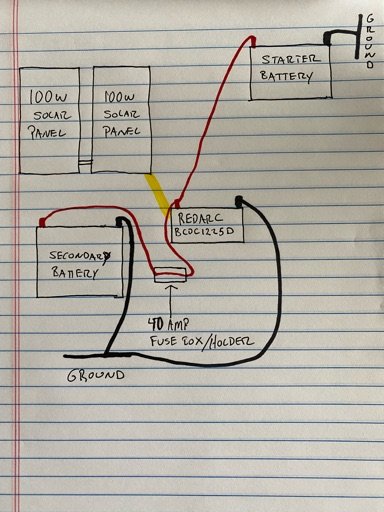troubleshoot it in pieces. disconnect the truck from the system and disconnect the solar. hook up your battery to the charge controller and set the charge controller for the AGM battery. normally, you hook the controller to the battery and select the battery you have. do that and then hook up your solar to the charge controller and see if that works. in good sunlight, you should read around 13-14vdc coming in from the solar. i have the renogy 100w panels and controller on my square drop trailer and i hook to the battery first and select the battery type, then hook up the solar. i dont feed from from my alternator, so i dont know how your controller works between panels and altenator, but i would at least get my solar set up and working and then figure out the input from your altenator. i also have a renogy solar panel and controller for my camper shell and i did the same where i hooked the controller to the battery, selected the battery type, then hooked up the panels and everything went fine...i'm reading the input from the panels and its usually 13-14vdc and everything works fine. you might need to figure out what needs to be done to select between solar and altenator...not sure if its automatic or if you need to input something to the controller to let it know you have 2 different inputs
if you can get the solar panel input working, then you can rule out it being a faulty controller
i have solar panels on my house, camp trailer, shop, and truck camper shell and none of the panels are "grounded"...they are silicone wafers wired together in a frame, no grounding that i'm aware of other than the negative wire being called a ground in DC.
your solar panels have a black and red wire with the black being negative. if you use the black wire directly off the panel, that is called a "floating" ground whereas with a vehicle, the black wire essentially goes to the chassis and then what ever you hook up has that black wire going to chassis...that is a "chassis" ground with the chassis being the common link for the negative (ground). that is more susceptible to problems with corrosion and good contacts, so if you wire the black wire directly to the power source and the load, then you eliminate the chassis as the middleman and have a more direct path.






